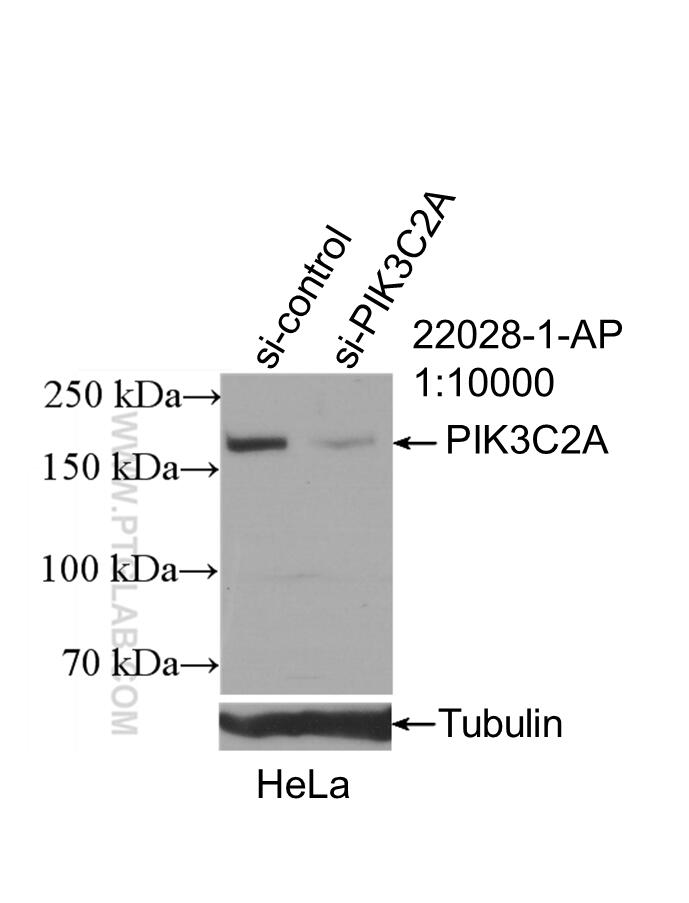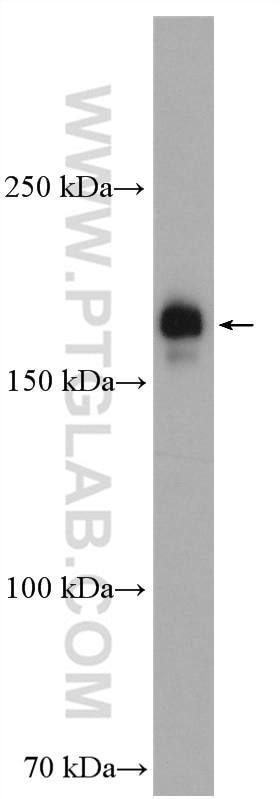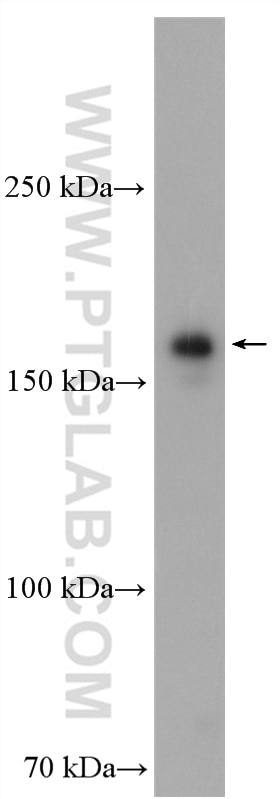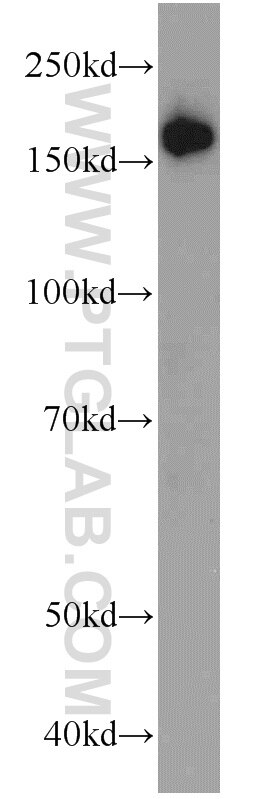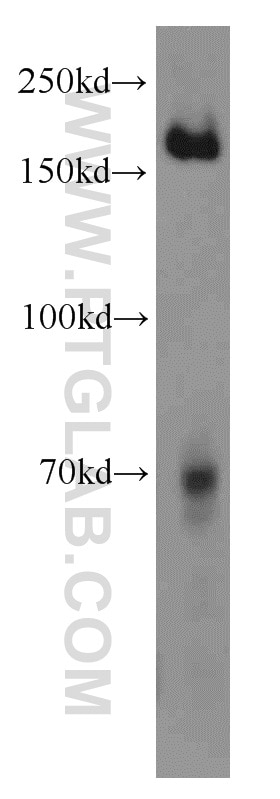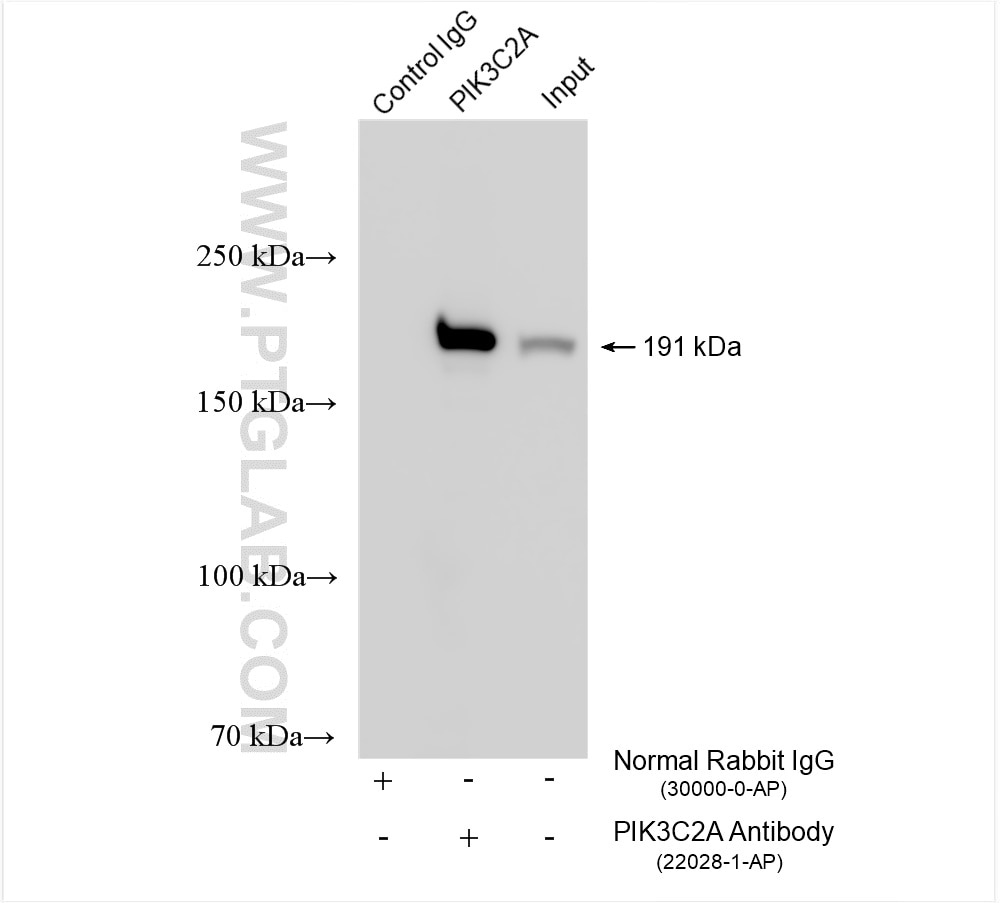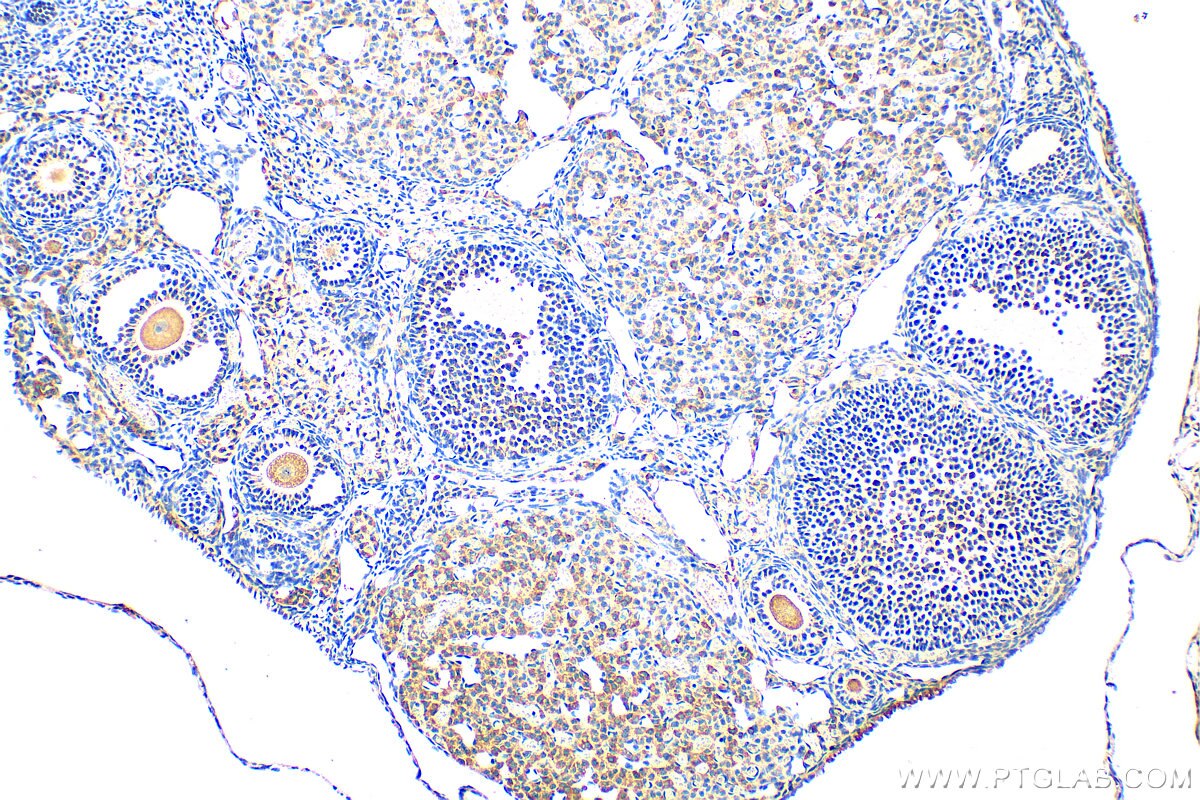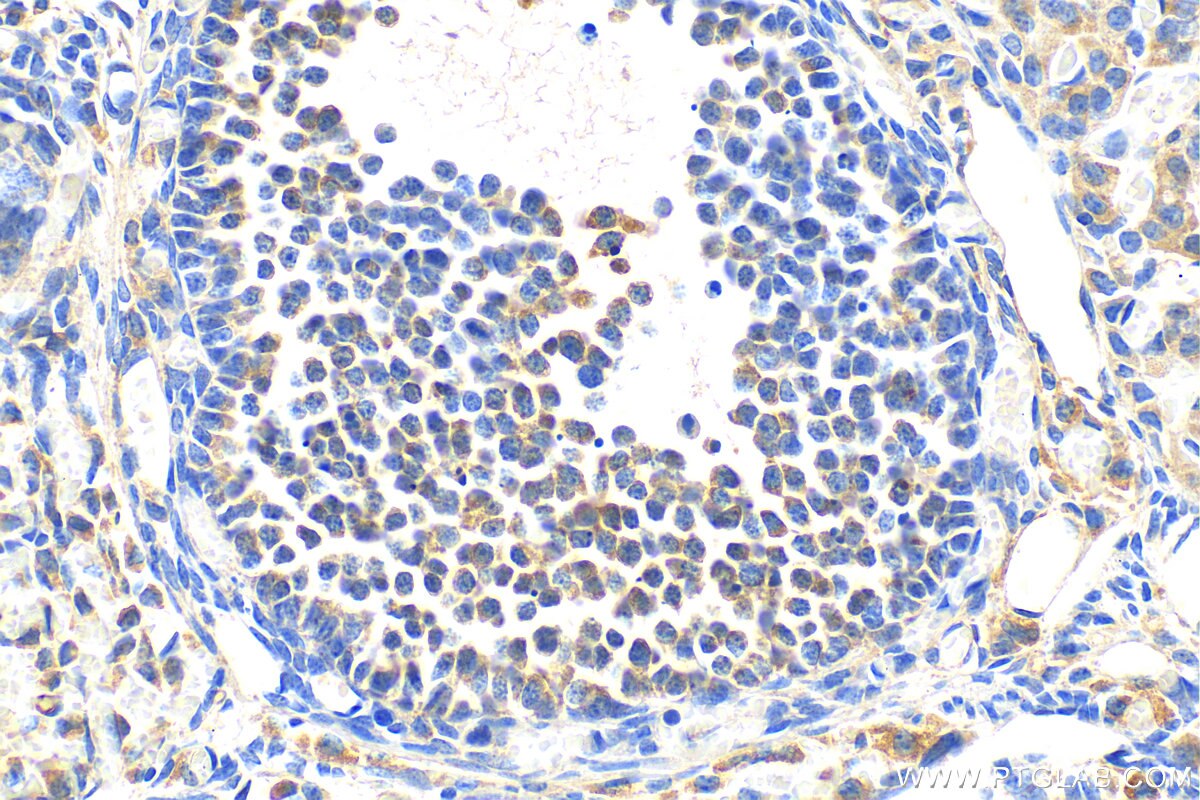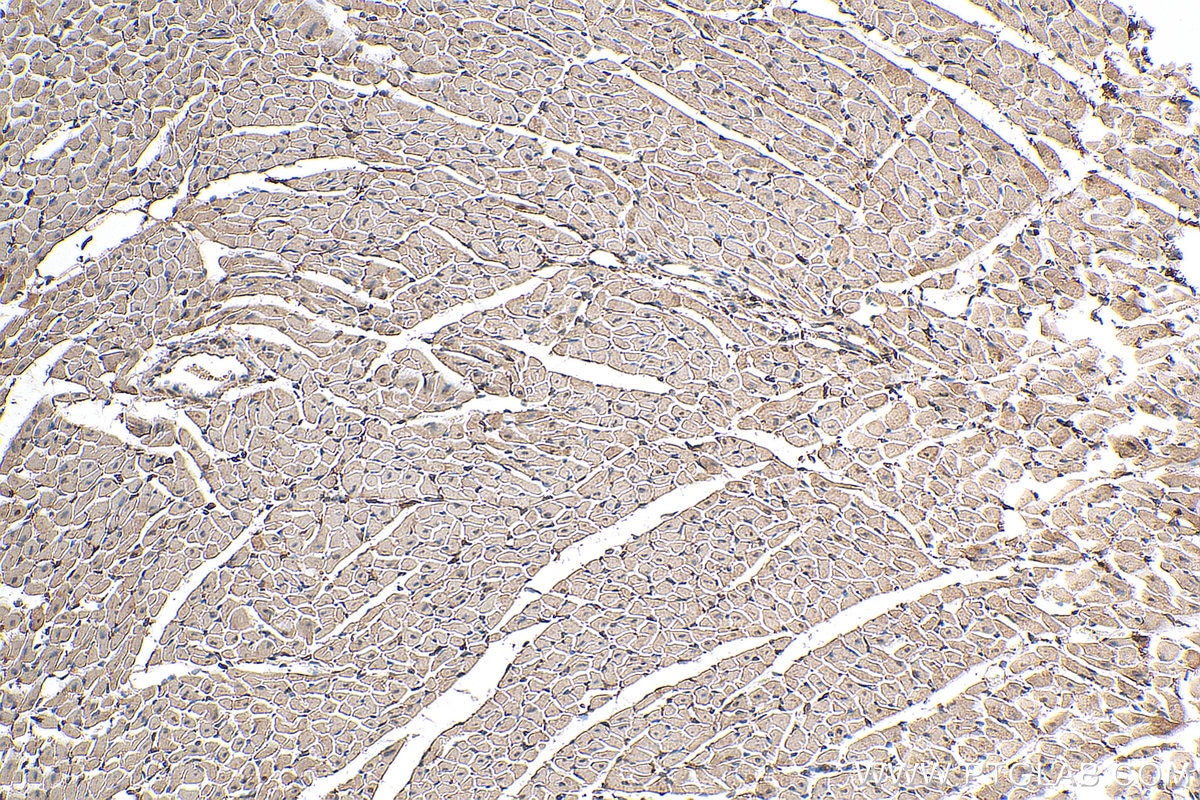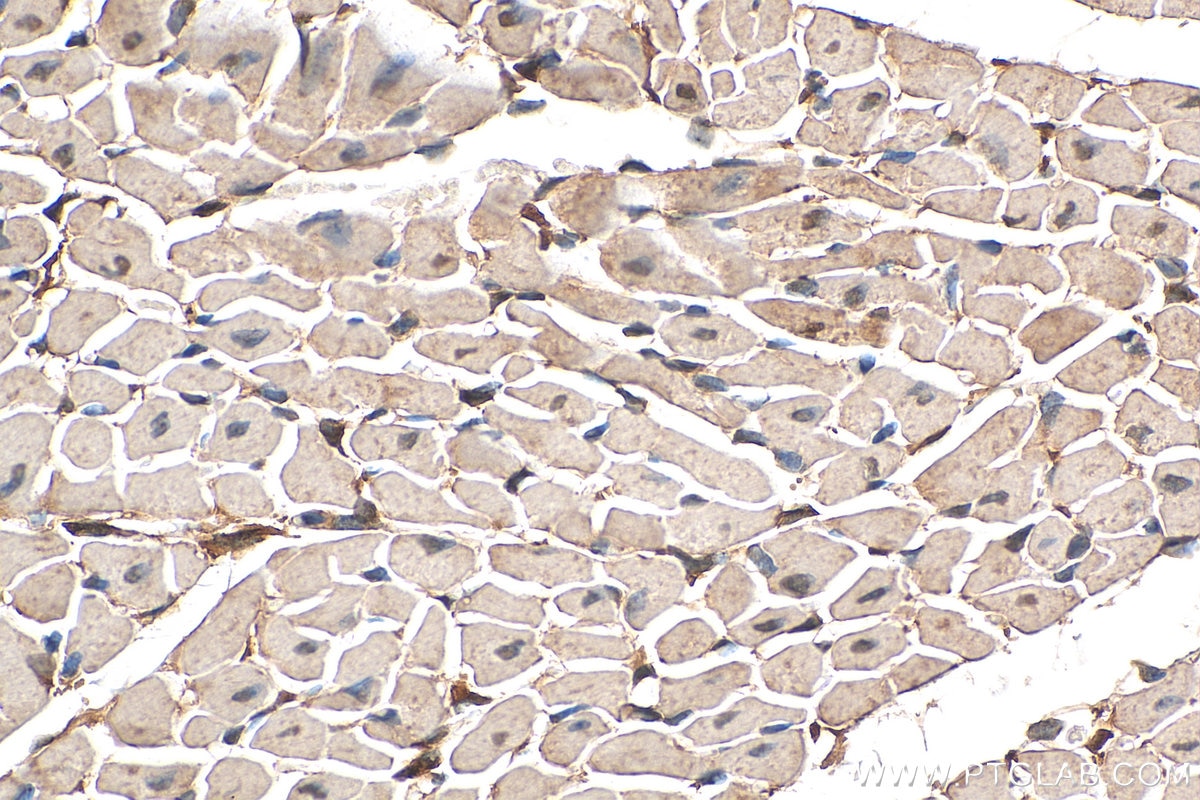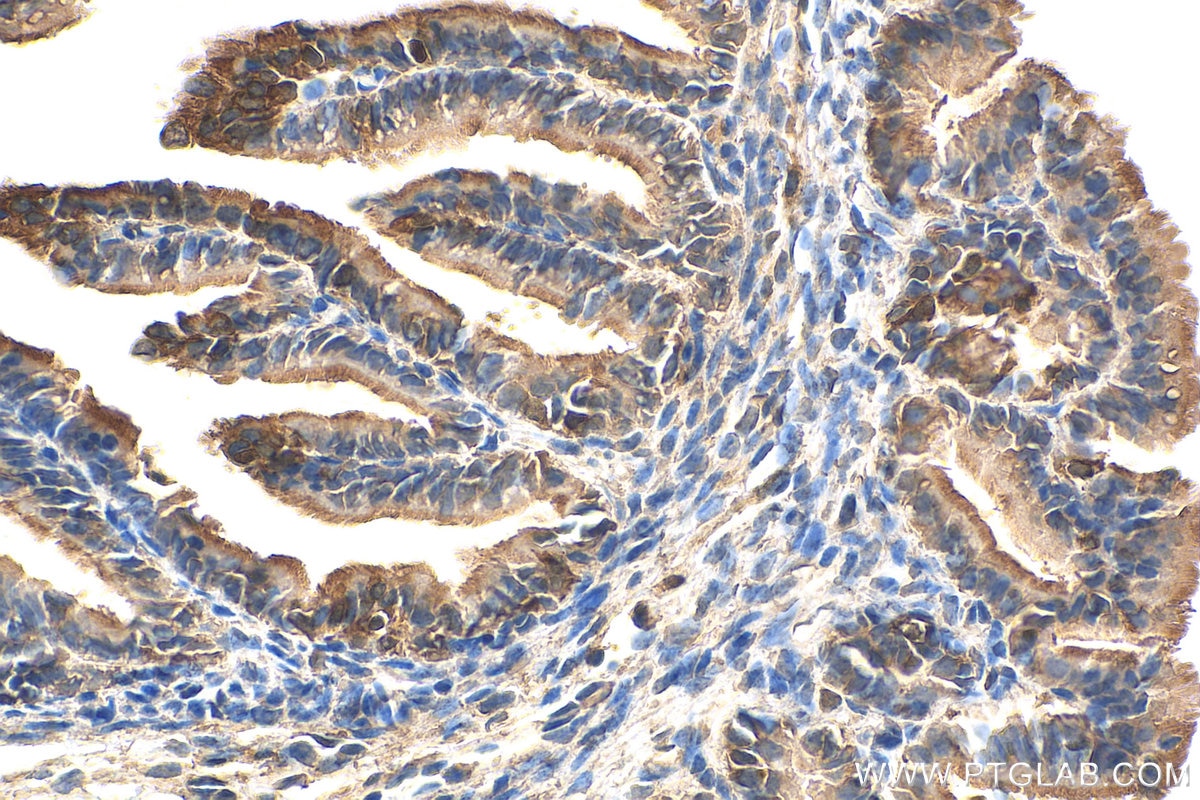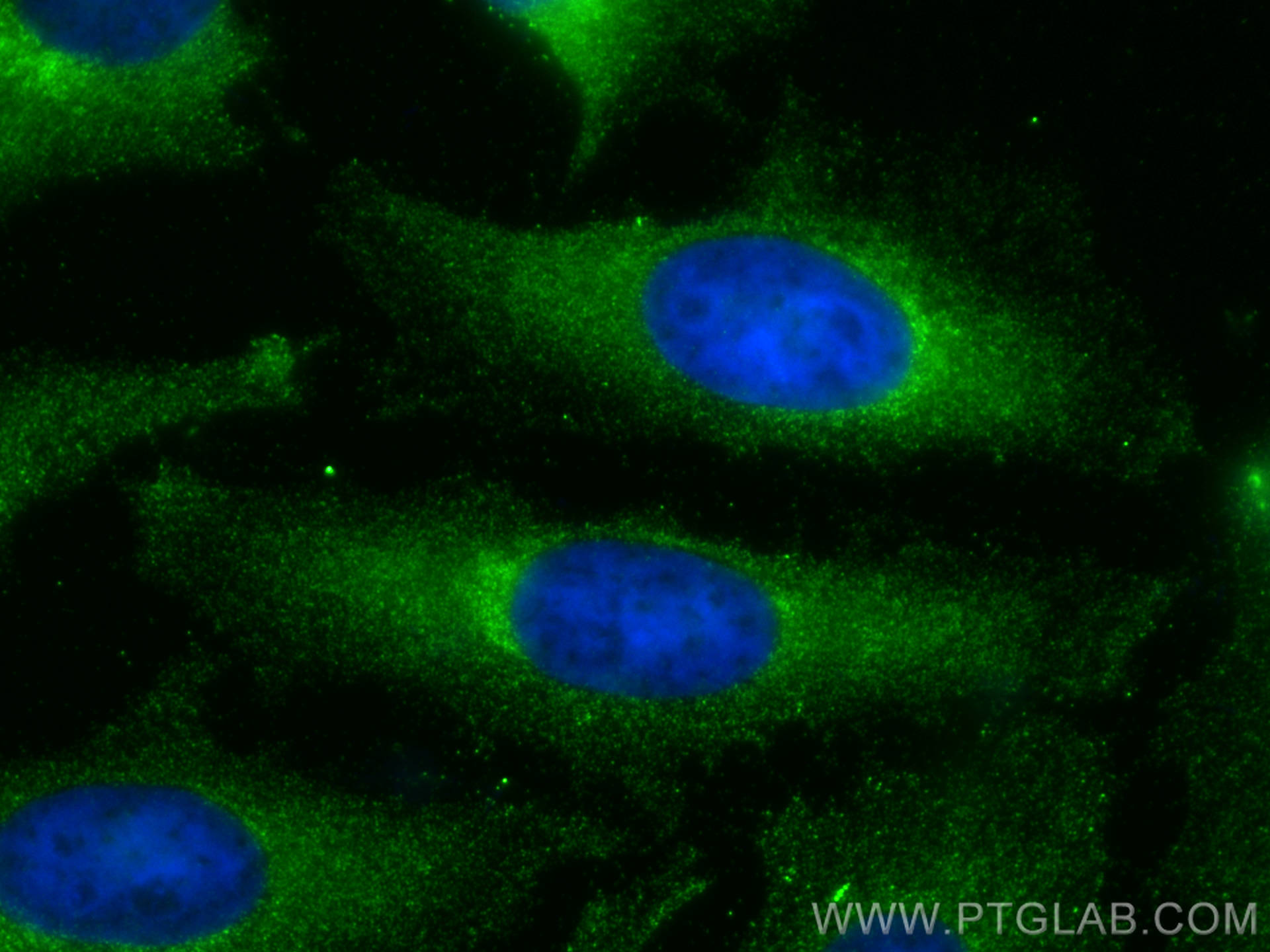- Phare
- Validé par KD/KO
Anticorps Polyclonal de lapin anti-PIK3C2A
PIK3C2A Polyclonal Antibody for WB, IP, IF, IHC, ELISA
Hôte / Isotype
Lapin / IgG
Réactivité testée
Humain, souris et plus (1)
Applications
WB, IHC, IF/ICC, IP, ELISA
Conjugaison
Non conjugué
N° de cat : 22028-1-AP
Synonymes
Galerie de données de validation
Applications testées
| Résultats positifs en WB | cellules HeLa, cellules PC-3, tissu placentaire humain |
| Résultats positifs en IP | cellules PC-3, |
| Résultats positifs en IHC | tissu ovarien de souris, tissu cardiaque de souris il est suggéré de démasquer l'antigène avec un tampon de TE buffer pH 9.0; (*) À défaut, 'le démasquage de l'antigène peut être 'effectué avec un tampon citrate pH 6,0. |
| Résultats positifs en IF/ICC | cellules HeLa, |
Dilution recommandée
| Application | Dilution |
|---|---|
| Western Blot (WB) | WB : 1:2000-1:8000 |
| Immunoprécipitation (IP) | IP : 0.5-4.0 ug for 1.0-3.0 mg of total protein lysate |
| Immunohistochimie (IHC) | IHC : 1:1000-1:4000 |
| Immunofluorescence (IF)/ICC | IF/ICC : 1:50-1:500 |
| It is recommended that this reagent should be titrated in each testing system to obtain optimal results. | |
| Sample-dependent, check data in validation data gallery | |
Applications publiées
| KD/KO | See 4 publications below |
| WB | See 9 publications below |
| IHC | See 1 publications below |
| IF | See 5 publications below |
Informations sur le produit
22028-1-AP cible PIK3C2A dans les applications de WB, IHC, IF/ICC, IP, ELISA et montre une réactivité avec des échantillons Humain, souris
| Réactivité | Humain, souris |
| Réactivité citée | rat, Humain |
| Hôte / Isotype | Lapin / IgG |
| Clonalité | Polyclonal |
| Type | Anticorps |
| Immunogène | PIK3C2A Protéine recombinante Ag16894 |
| Nom complet | phosphoinositide-3-kinase, class 2, alpha polypeptide |
| Masse moléculaire calculée | 1686 aa, 191 kDa |
| Poids moléculaire observé | 191 kDa |
| Numéro d’acquisition GenBank | BC113658 |
| Symbole du gène | PIK3C2A |
| Identification du gène (NCBI) | 5286 |
| Conjugaison | Non conjugué |
| Forme | Liquide |
| Méthode de purification | Purification par affinité contre l'antigène |
| Tampon de stockage | PBS avec azoture de sodium à 0,02 % et glycérol à 50 % pH 7,3 |
| Conditions de stockage | Stocker à -20°C. Stable pendant un an après l'expédition. L'aliquotage n'est pas nécessaire pour le stockage à -20oC Les 20ul contiennent 0,1% de BSA. |
Protocole
| Product Specific Protocols | |
|---|---|
| WB protocol for PIK3C2A antibody 22028-1-AP | Download protocol |
| IHC protocol for PIK3C2A antibody 22028-1-AP | Download protocol |
| IF protocol for PIK3C2A antibody 22028-1-AP | Download protocol |
| IP protocol for PIK3C2A antibody 22028-1-AP | Download protocol |
| Standard Protocols | |
|---|---|
| Click here to view our Standard Protocols |
Publications
| Species | Application | Title |
|---|---|---|
Science PI(3,4)P2-mediated cytokinetic abscission prevents early senescence and cataract formation.
| ||
Cancer Cell Mitotic Spindle Assembly and Genomic Stability in Breast Cancer Require PI3K-C2α Scaffolding Function. | ||
Cell Res Phosphatidylinositol 3,4-bisphosphate regulates neurite initiation and dendrite morphogenesis via actin aggregation. | ||
J Cell Sci Defining endogenous TACC3-chTOG-clathrin-GTSE1 interactions at the mitotic spindle using induced relocalization
| ||
J Cell Sci Defining endogenous TACC3-chTOG-clathrin-GTSE1 interactions at the mitotic spindle using induced relocalization. | ||
Front Cell Infect Microbiol The Role of Tim-3 on dNK Cells Dysfunction During Abnormal Pregnancy With Toxoplasma gondii Infection. |
Avis
The reviews below have been submitted by verified Proteintech customers who received an incentive forproviding their feedback.
FH HUAYI (Verified Customer) (01-17-2020) | This antibody provide brilliant Western Blot results, and as well, the specificity for Immunofloruorence is high. But we are glad if more discounts would be received.
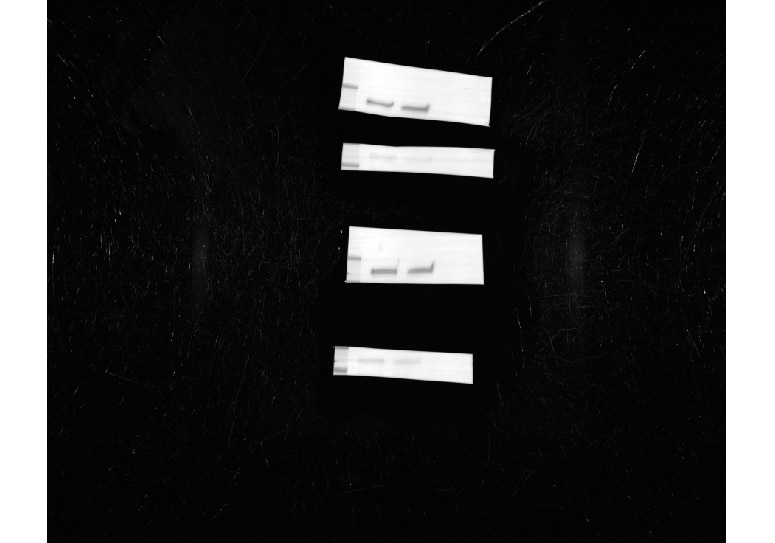 |
